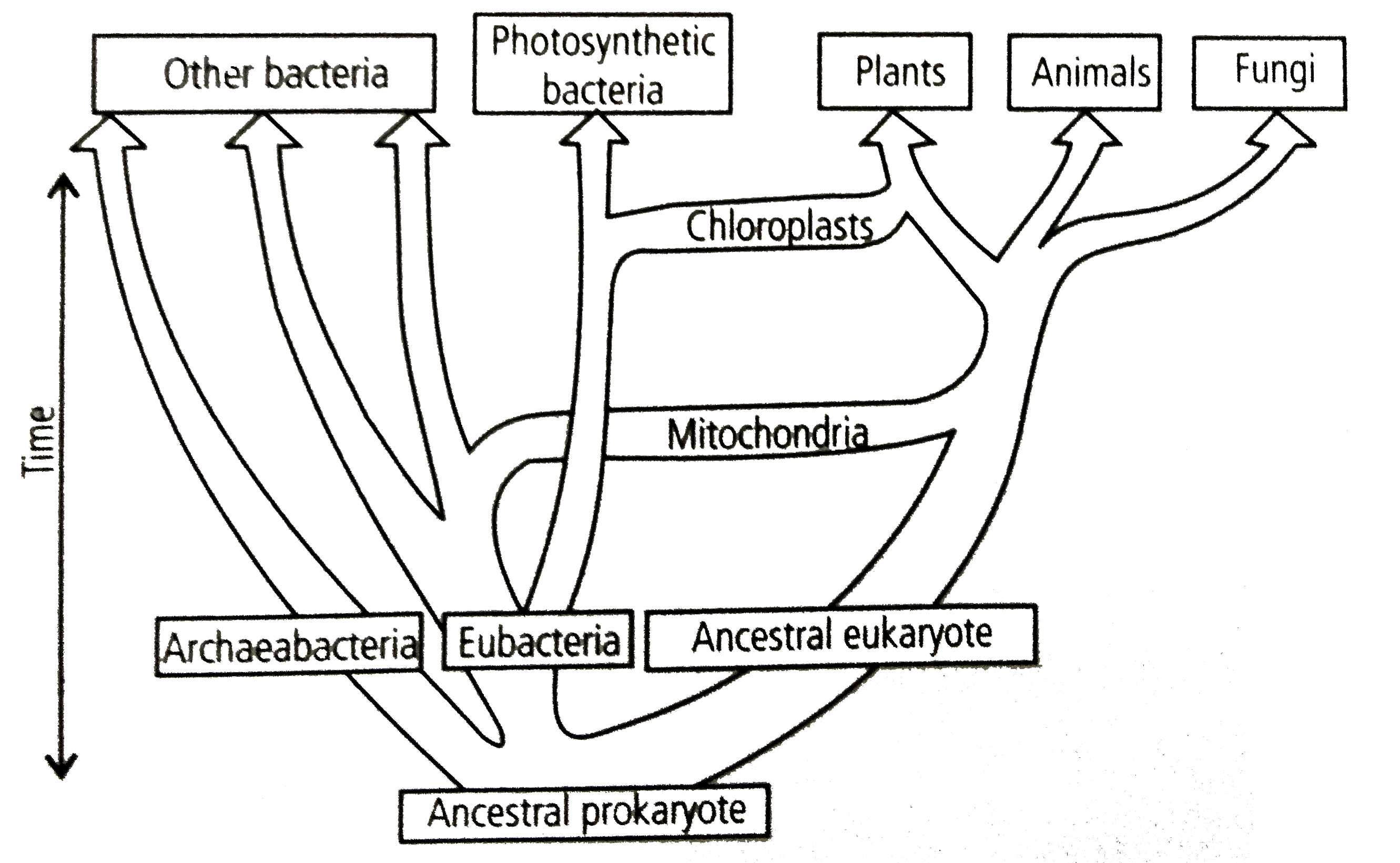The evolutionary story of moths in England during industrialisation reveals, that ' evolution is apparently reversible '. Clarify this statement.
Step-by-Step Text Solution:
1. Introduction to the Moths of England: The evolutionary story of moths in England, specifically the species *Biston betularia*, serves as a classic example of natural selection and evolution in response to environmental changes.
2. Pre-Industrialization Scenario: Before the onset of industrialization, the environment was relatively clean, and tree barks were covered with light-colored lichens. This light background provided camouflage for the light-colored moths, allowing them to evade predation by birds. Consequently, the light moths thrived, while the dark moths were more easily spotted and consumed by predators.
3. Impact of Industrialization: With industrialization came increased pollution, particularly from soot and smoke. This pollution led to the death of lichens and darkened the tree barks. As a result, the environment changed dramatically, favoring the dark-colored moths. The dark moths became less visible against the now-darkened tree barks, allowing them to escape predation, while the light moths became more vulnerable and were targeted by birds.
4. Reversal of Evolutionary Trends: In modern times, as pollution levels have decreased due to environmental regulations and conservation efforts, lichens have begun to reappear on tree barks. This change has restored the light background, once again favoring the light-colored moths. The dark moths, now more visible against the lighter tree barks, are once again at risk from predation.
5. Conclusion on Reversibility of Evolution: The example of the moths illustrates that evolution can be reversible. The changes in the population dynamics of the moths—first favoring the light moths, then the dark moths, and potentially back to the light moths—demonstrate that natural selection is influenced by environmental conditions. Thus, the statement that "evolution is apparently reversible" highlights how species can adapt to changing environments and how these adaptations can shift back as conditions change.
---
Topper's Solved these Questions
- EVOLUTIONBook:NCERT EXEMPLAR ENGLISHChapter:EVOLUTIONExercise:Long answer type Questions
Explore 7 Videos
- EVOLUTIONBook:NCERT EXEMPLAR ENGLISHChapter:EVOLUTIONExercise:Very Short Answer Type Questions.
Explore 15 Videos
- ENVIRONMENTAL ISSUES Book:NCERT EXEMPLAR ENGLISHChapter:ENVIRONMENTAL ISSUES Exercise:Long Answer Type Questions
Explore 7 Videos
- HUMAN HEALTH AND DISEASESBook:NCERT EXEMPLAR ENGLISHChapter:HUMAN HEALTH AND DISEASESExercise:All Questions
Explore 69 Videos
Similar Questions
You have studied the story of peppered moths in England. Had the industries been removed, what impact could it have on the moth population ? Discuss.
View SolutionAssertion :- In England, before industrialisation, it was observed that there were more white-winged moths on trees than dark-winged or melanised moths.
Reason :- White winged moths can survive in non industrialised area.
View Solution
Knowledge Check
Given diagram illustrates an evolutionary tree.

Which of the following statements can be deduced from the given evolutionary tree?
(i) The ancestral eukaryotes were anaerobic.
(ii) All eukaryotes were anaerobic.
(ii) All eukaryotes possess mitochondria.
(iii) Eubacteria and Eukaryota have a common ancestor whereas Archebacteria have a unique and independent origin.
(iv) Mitochondria and chloroplasts have similar genomes.
(v) Mitochondria are presents in plants, animals and fungi.
(vi) chloroplasts and mitochondria arose asendosymbionts.
(vii) Fungi and animals lost chloroplasts during evolution.Aiii,v and viBi,v and viCii,iii,iv and vDi,v,vi and viiRead the following statements and choose the correct option.
(A) Increase in melanized moths after industrialization in Great Britain is a proof for natural selection.
(B) When more individuals of a population acquire a mean character value, it is called disruption.
(C ) Changes in allelic frequency in a population will lead to Hardy-Weinberg equilibrium
(D) Genetic drift changes the existing gene or allelic frequency in future generationsAOnly ii is correct.BOnly iv is correct.CBoth I and iv are correct.DBoth I and ii are correct.The most apparent change during the evolutionary history of Homo-sapients is traced in
Aloss of body hairBwalking uprightCshortening of the jawsDremarkable increase in the brain size.
a) How do the observations made duirng moth collection in pre- and postindustralized era in England support evolution by Natural Selection?
b) Explain the phenomenon that is well represented by Darwin's finches other than natural selection.
View SolutionA. The conditions primitive on earth (before the origin of life) were :
low temperature, volcanic storms, reducing atmosphere containing Ch4,NH3, etc.
B. Cheetah and humans share similarities in the pattern of bones of forelimbs.
C. In a collection of moths made in the 1850s i.e., before industrialization set in, it was observed that there were more dark-winged moths on trees than white-winged moths.
D. Branching descent and natural selection are the two key concepts of Darwinian theory of evolution.
E. The Neanderthal man with a brain size of 1400 cc lived in east and central Asia 25,000-10,000 years age.
Which set of given statements are correct ?
View SolutionTaking an example of white-winged moths and dark-winged moths of England in per and post industrialised era, explain evolution by natural selection .
View SolutionThe most apparent change during the evolutionary history of Homo-sapients is traced in
View SolutionSelect the incorrect statement.
( i ) The essence of the Darwinian theory of evolution is natural selection
(ii) Evolution is a directed process in the sense of determinism
(III) The geological history of the earth is not related to the biological history of the earth
(IV ) During evolution ,the rate of appearance of new forms is linked to the life cycle
View Solution

